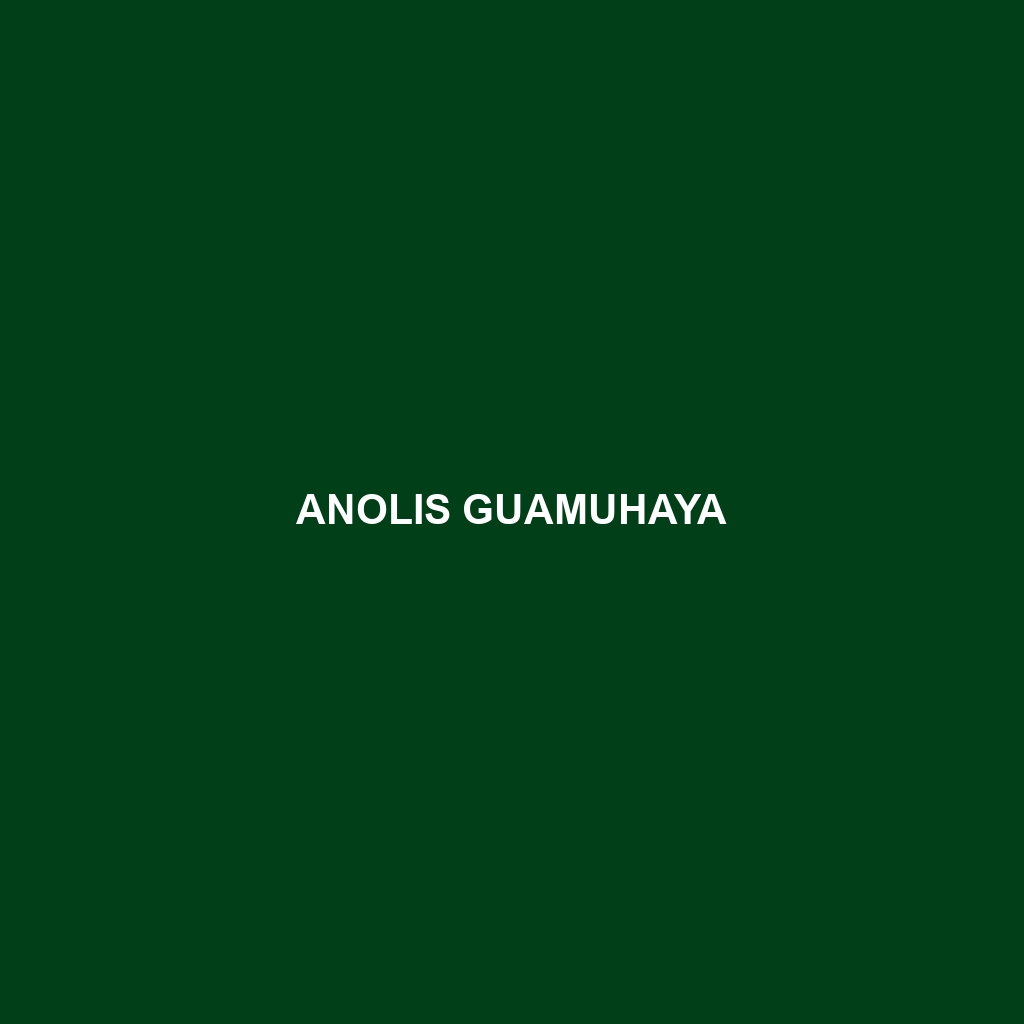Anolis guamuhaya: The Unique Cuban Anole
Common Name: Anolis guamuhaya
Scientific Name: Anolis guamuhaya
Habitat
Anolis guamuhaya, commonly known as the Cuban Anole, is primarily found in the lush forests of eastern Cuba, particularly in the provinces of Holguín and Santiago de Cuba. This species thrives in a variety of habitats, including subtropical and tropical moist lowland forests, as well as more humid highland areas. The species prefers environments with ample foliage and is often spotted in trees, on branches, and among dense vegetation.
Physical Characteristics
Adult Anolis guamuhaya typically measures between 15 to 20 centimeters in total length. They are characterized by a slender body and elongated limbs, which aid in their arboreal lifestyle. Their coloration ranges from vibrant green to light brown, providing excellent camouflage among the leaves. Distinctive features include a large dewlap, which males use during courtship displays, and a robust tail that assists in balance while navigating their treetop environment.
Behavior
This species is diurnal, meaning they are active during the day. They are known for their territoriality, particularly the males, who often engage in displays to assert dominance over their chosen habitats. Anolis guamuhaya is also adept at climbing and can quickly evade predators by darting among branches. Their social behavior includes basking in sunlight and frequently engaging in head-bobbing displays.
Diet
Anolis guamuhaya is an insectivorous lizard, primarily feeding on a diet that consists of small insects such as crickets and moths. They actively hunt these prey items, demonstrating both ambush and pursuit styles of feeding. Their diet may also include other small arthropods, making them important for controlling insect populations within their ecosystem.
Reproduction
The breeding season for Anolis guamuhaya typically occurs during the warmer months, with mating rituals commencing in late spring. Males attract females through vibrant displays using their dewlaps. After successful mating, females lay small clutches of eggs, often hidden in leaf litter or crevices to protect them from predators. The incubation period for these eggs lasts around 6 to 8 weeks, leading to the emergence of juvenile lizards that are independent from birth.
Conservation Status
According to the IUCN Red List, Anolis guamuhaya is currently classified as “Vulnerable”. Habitat loss due to deforestation and urban development poses a significant threat to their population. Conservation efforts are necessary to ensure the preservation of their natural habitats and safeguard the future of this unique species.
Interesting Facts
Anolis guamuhaya has the remarkable ability to change its color to blend into its surrounding environment, a trait that enhances its camouflage against predators. Additionally, these lizards are known for their impressive acrobatic skills, allowing them to leap between branches with precision.
Role in Ecosystem
Anolis guamuhaya plays a crucial role in its ecosystem by acting as both predator and prey. As insectivores, they help regulate insect populations, contributing to the health of their environment. Furthermore, they serve as a food source for birds and larger reptiles, showcasing their importance in the food web.
